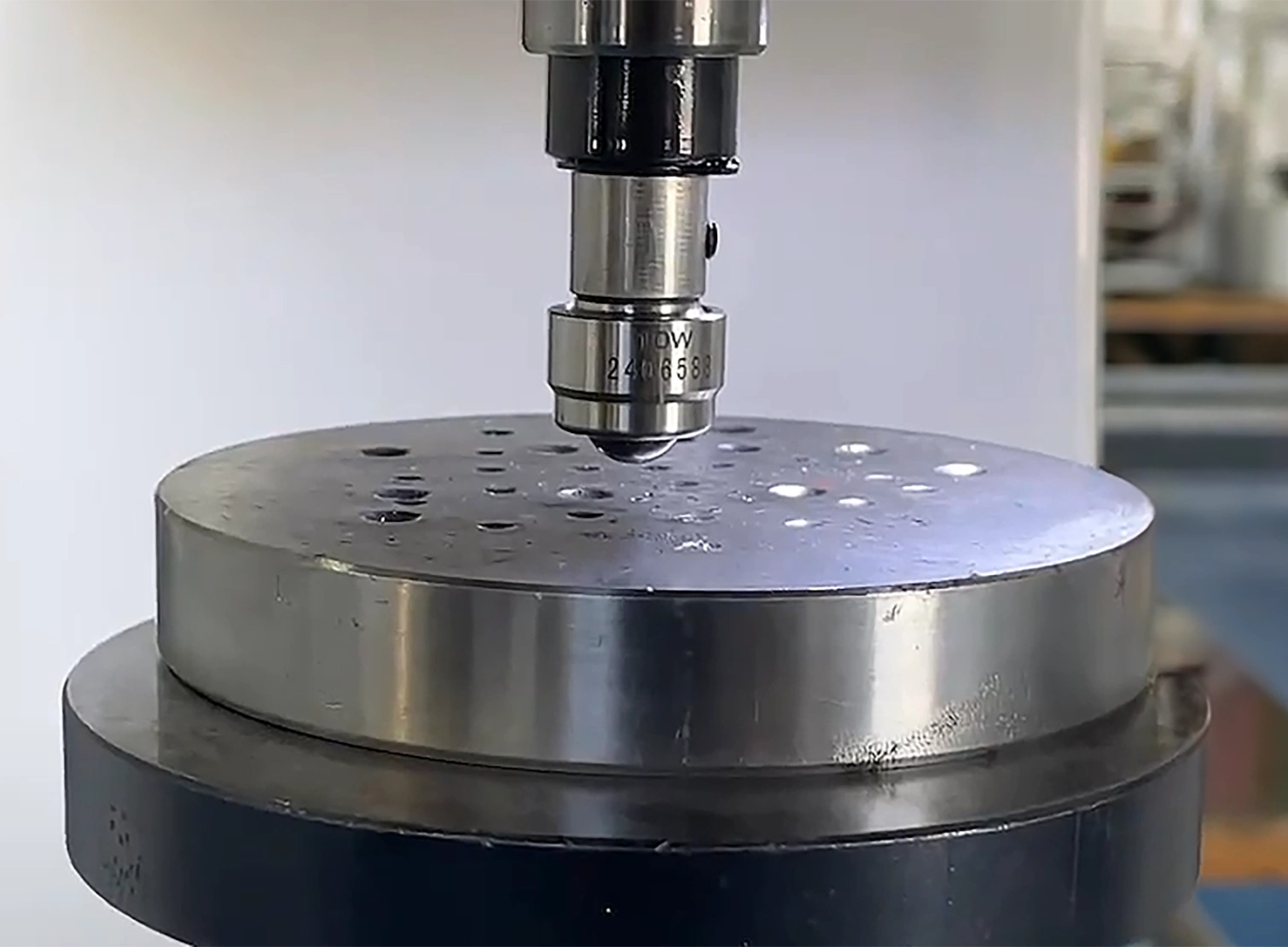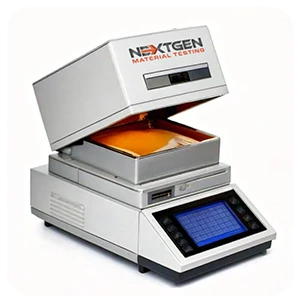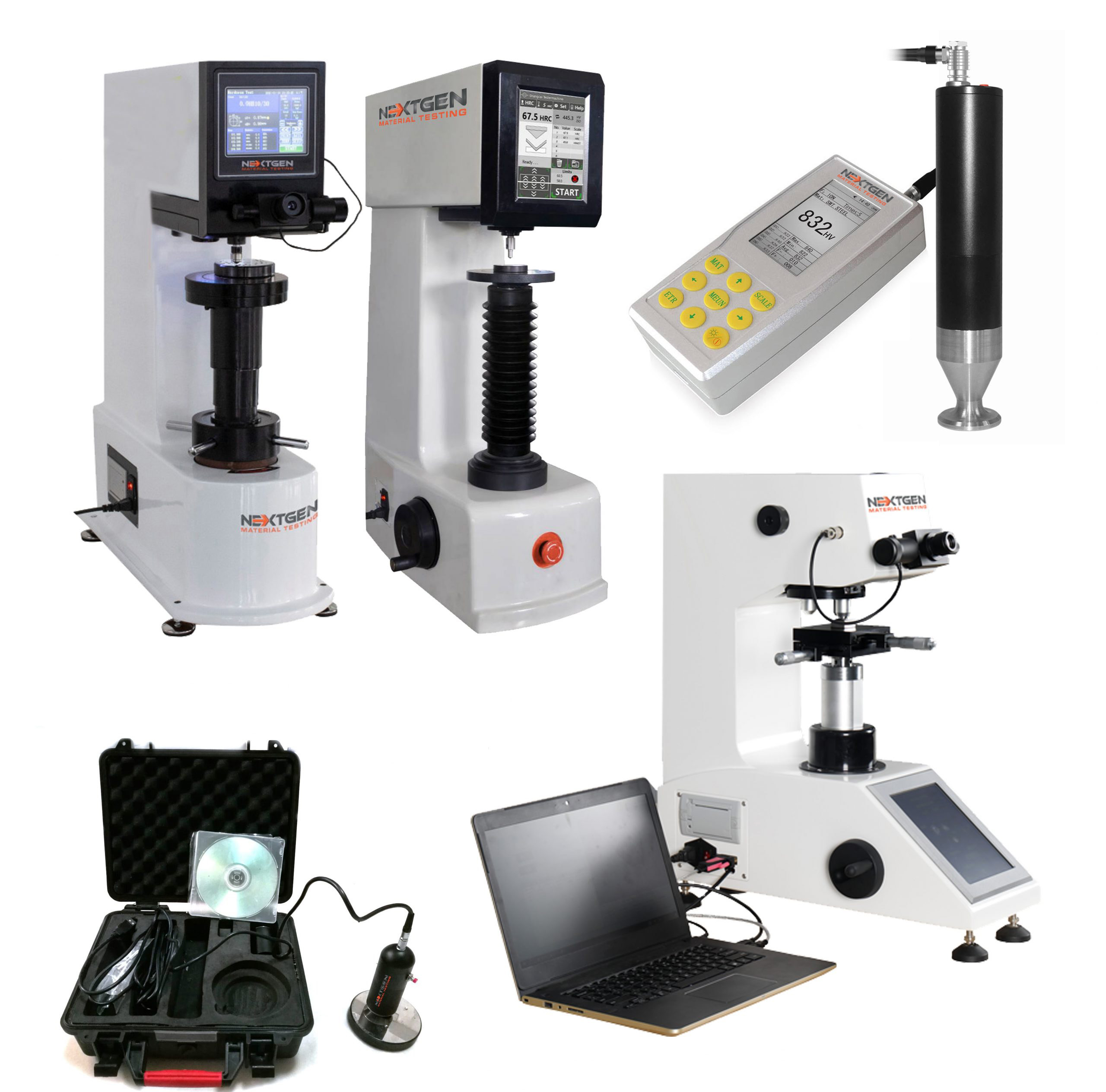
Metal Testing Equipment

Metal hardness testing is the process of determining how resistant a metal is to permanent deformation when subjected to a controlled indentation. By applying a specific load with a diamond or ball indenter, the hardness value is measured from the depth or size of the impression. This method is directly related to tensile strength and is widely used to assess the mechanical properties of metals without damaging the sample.
Hardness testing offers a straightforward and dependable way to confirm material strength, uniformity, and durability. It is a fundamental tool in both laboratories and production lines, providing accurate data to maintain consistent quality and ensure reliable performance.
Metal Hardness Testing Equipment from NextGen
NextGen supplies a complete line of hardness testing solutions. The portfolio includes universal testers, dedicated systems for each method, as well as hardness test blocks, indenters, accessories, and metallography consumables. This allows our clients to perform precise tests in accordance with all major international standards.
-
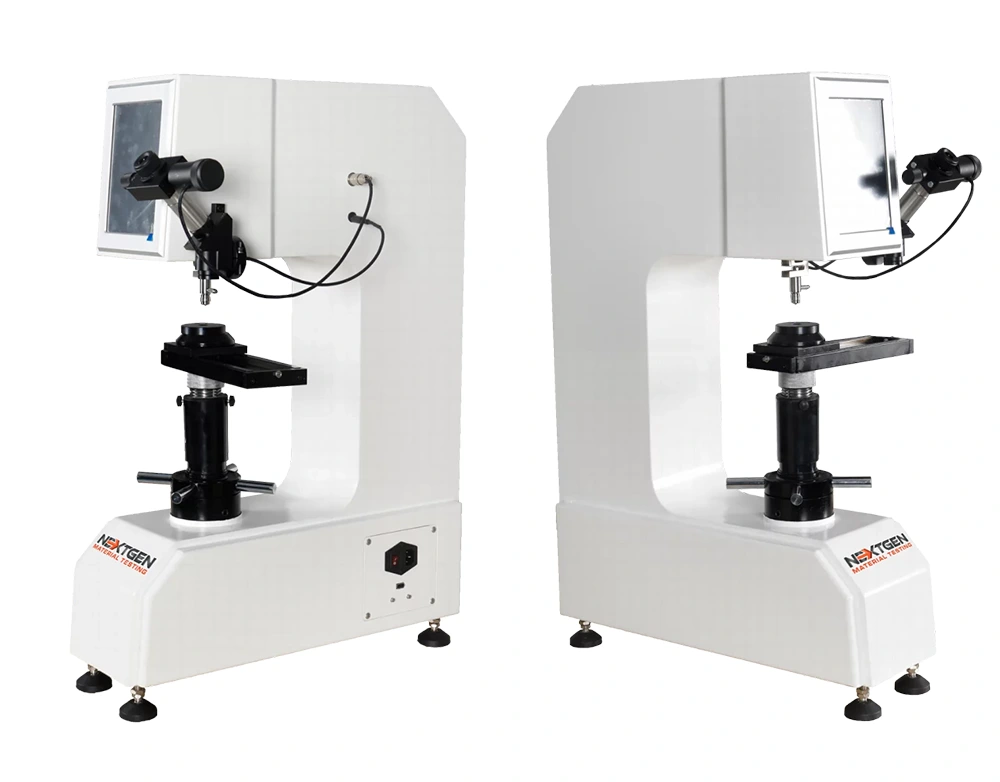 Universal Hardness Testers (Vickers, Knoop, Rockwell, Brinell)
Universal Hardness Testers (Vickers, Knoop, Rockwell, Brinell)
Versatile systems that combine several methods in one platform, designed for laboratories that require flexibility across different hardness scales and load ranges. 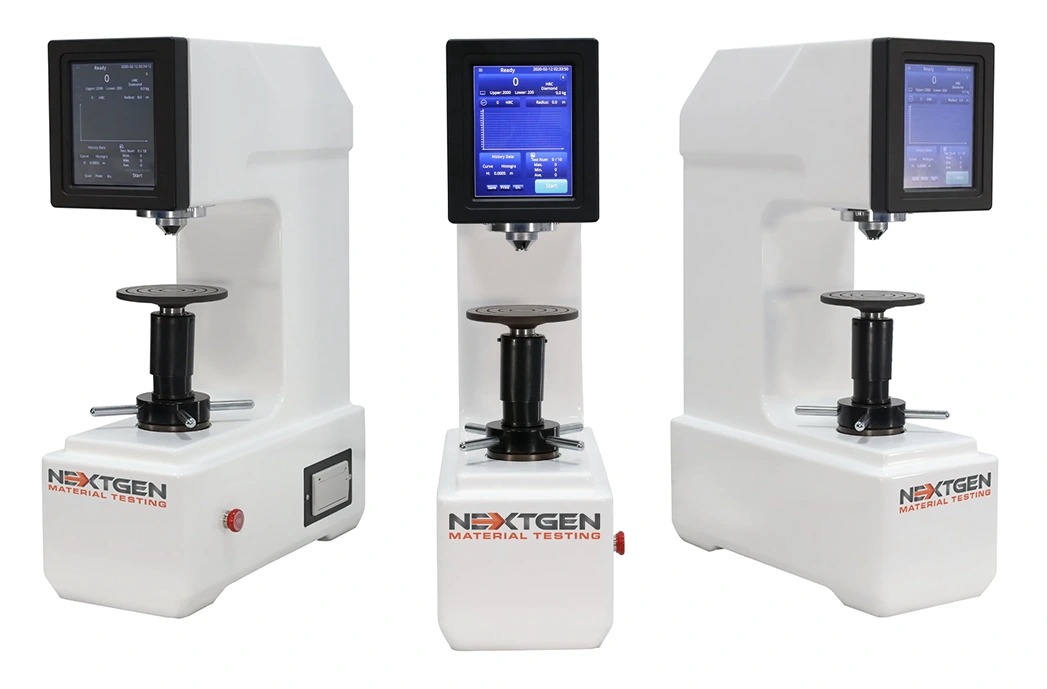
Rockwell Hardness Testers
Instruments that determine hardness by measuring indentation depth under load. Rockwell testing is valued for its speed and repeatability, making it a common choice for steels, alloys, and routine quality control.-
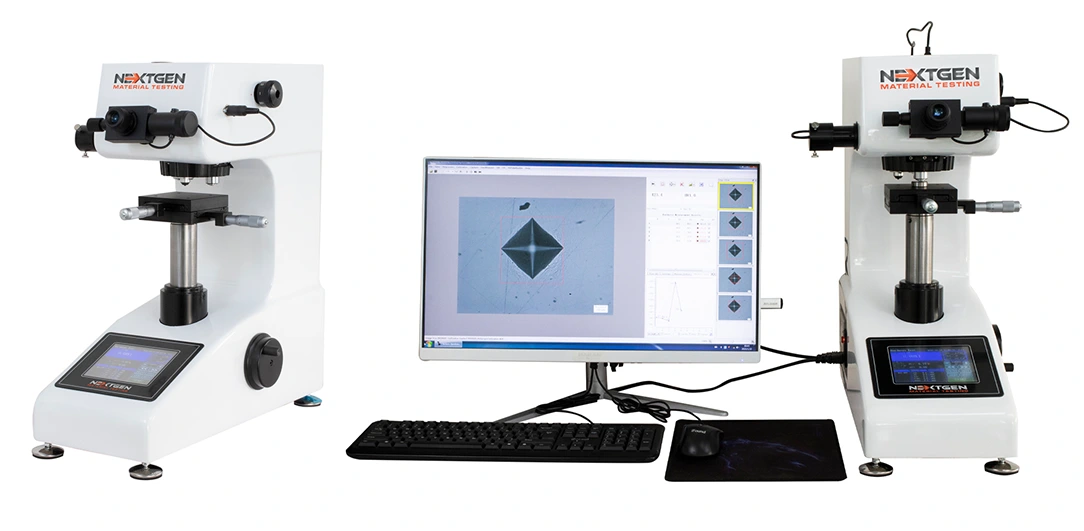 Vickers and Knoop Hardness Testers
Vickers and Knoop Hardness Testers
High-precision systems using diamond-shaped indenters. These testers are ideal for thin samples, micro-components, and case depth evaluations, covering both micro and macro hardness ranges. -
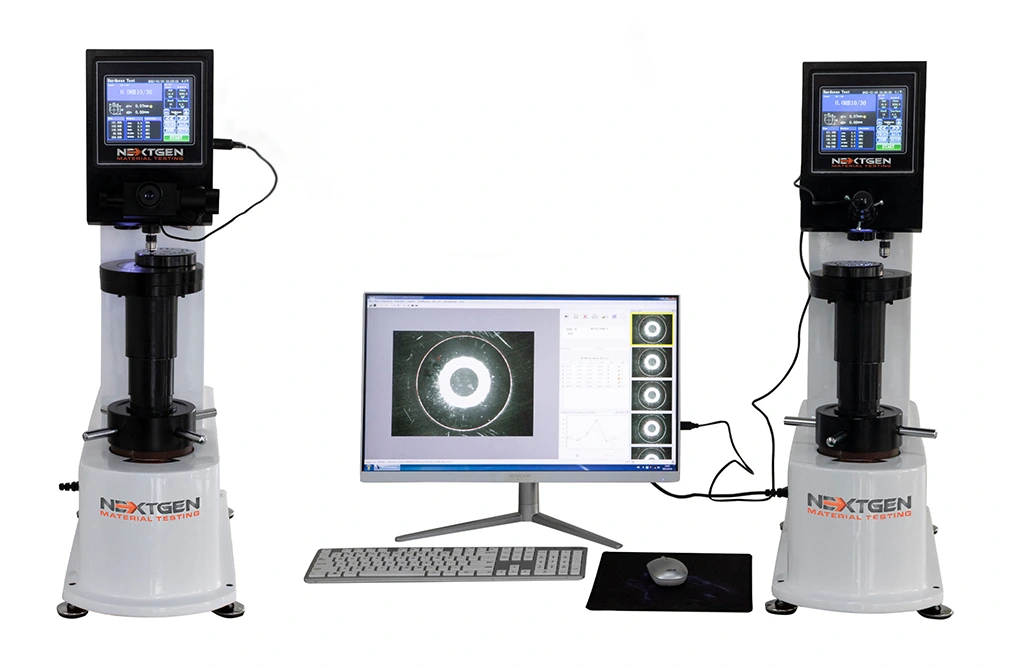 Brinell Hardness Testers
Brinell Hardness Testers
Heavy-duty machines applying large loads with a carbide ball. This method is best suited for castings, forgings, and other metals with coarse or irregular structures. -
 Portable Hardness Testers
Portable Hardness Testers
Compact and mobile units designed for on-site testing of large or assembled components. Portable testers provide fast, reliable results when laboratory testing is impractical.
All NextGen hardness testing equipment is built for accuracy, repeatability, and compliance with ASTM and ISO standards. From high-load Brinell checks to detailed Vickers microanalysis or quick field inspections with portable devices, our systems ensure consistent and traceable results across the full spectrum of hardness testing methods.
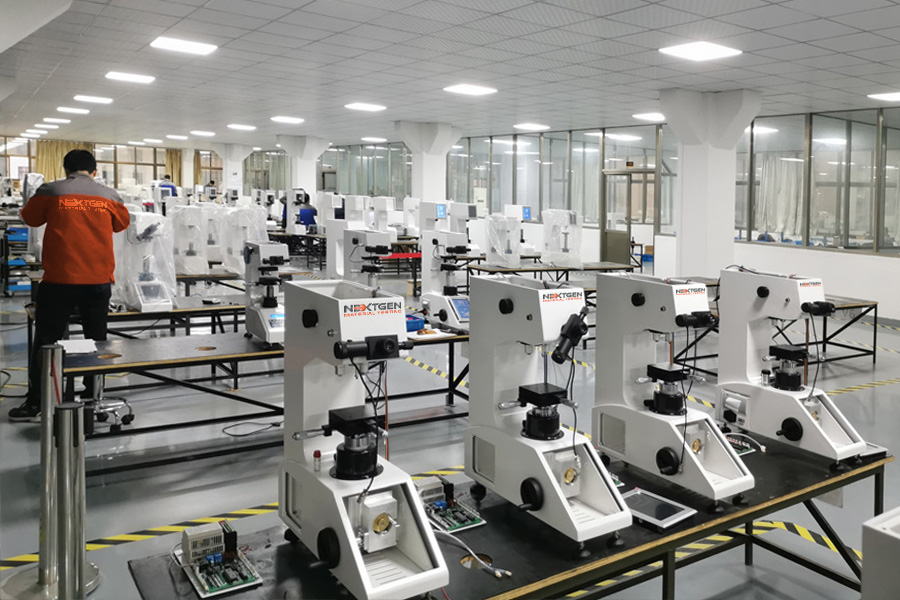
Certified Metal Hardness Testing Systems
All NextGen hardness testing equipment is built for accuracy, repeatability, and compliance with ASTM and ISO standards. From high-load Brinell checks to detailed Vickers microanalysis or quick field inspections with portable devices, our systems ensure consistent and traceable results across the full spectrum of hardness testing methods.
Sub-categories
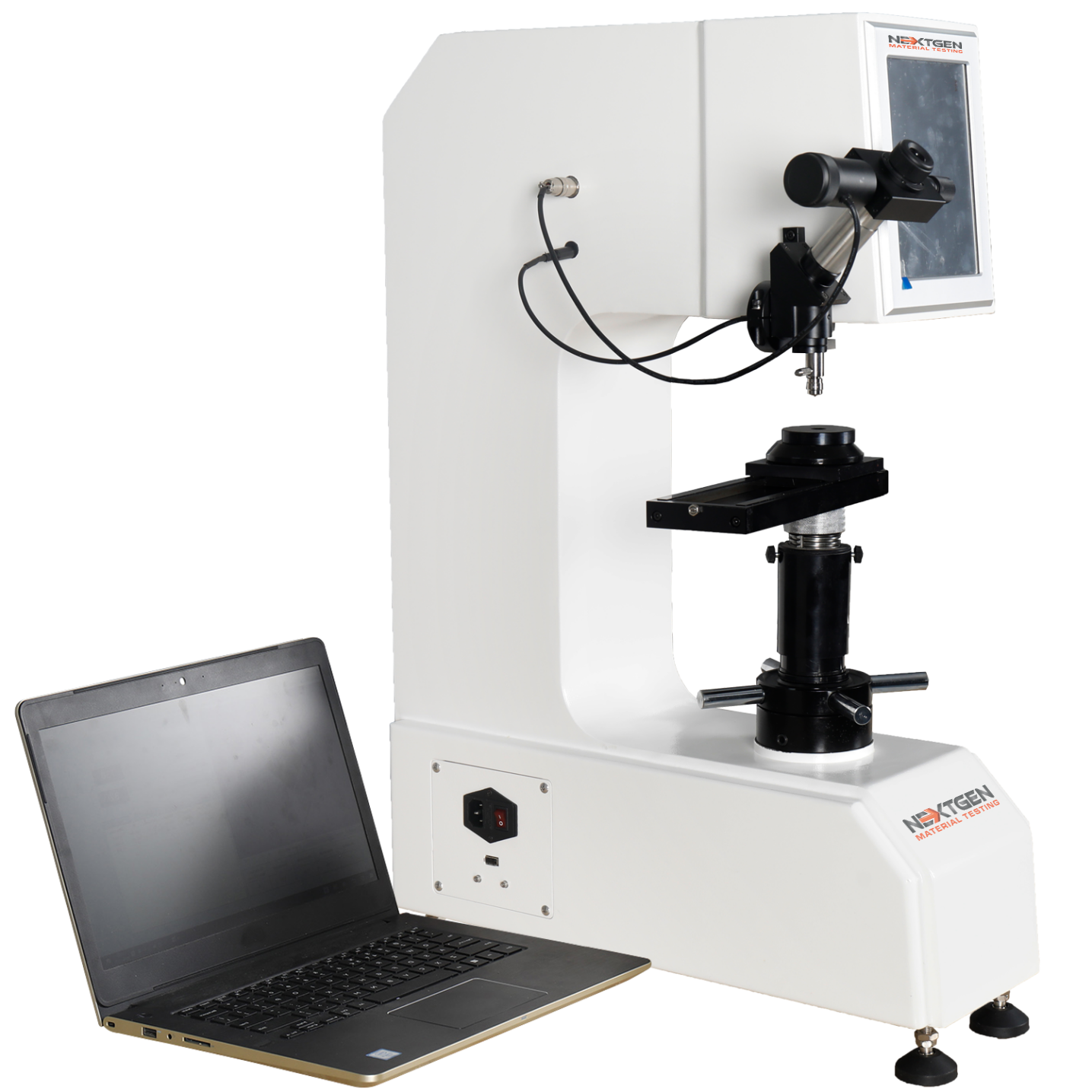
Universal Tester For Vickers / Knoop, Rockwell and Brinell
Explore the world of material testing with our Universal Hardness Tester, a sophisticated and comprehensive solution for assessing the hardness of metals. This cutting-edge equipment seamlessly integrates Vickers, Knoop, Rockwell, and Brinell hardness testing methods, offering unparalleled versatility for your material analysis needs.

Rockwell Hardness Testers
Rockwell Hardness Testing is an indentation hardness that measures the depth of penetration after undergoing a preload followed by a major load. Rockwell testing is generally used for quality control of steels and other alloys (including some plastics).
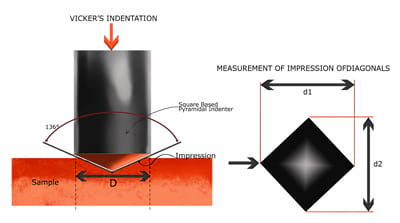
Vickers and Knoop Hardness Testers
Vickers Hardness Testing is an indentation hardness that can be used for all metals. A diamond penetrator is used for both Micro Vickers (0-1kgf) and Macro Vickers (1-100kgf) which allows for the Vickers Hardness value to be continuous over the complete load range.
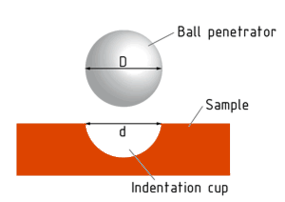
Brinell Hardness Testers
Brinell Hardness Testing is an indentation hardness that measures materials that are too coarse or have too rough of a surface for other hardness methods. A carbide ball is pressed into a material at a defined load for a defined time and the resulting diameter of indentation is measured.
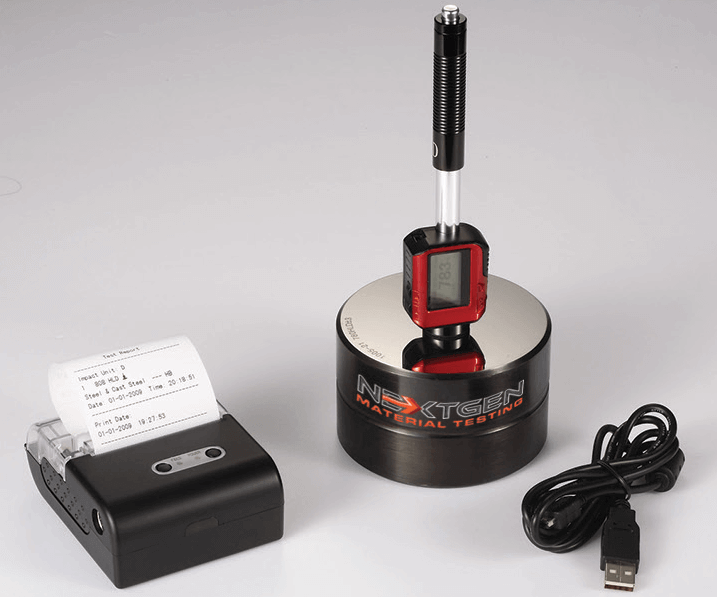
Portable Hardness Testers
Portable hardness testing allows for on site and field production testing on a wide variety of metals and specimen configurations. Portable hardness testers are available in a variety of scales including Rockwell, Brinell, Vickers, Leeb and Webster.
Products
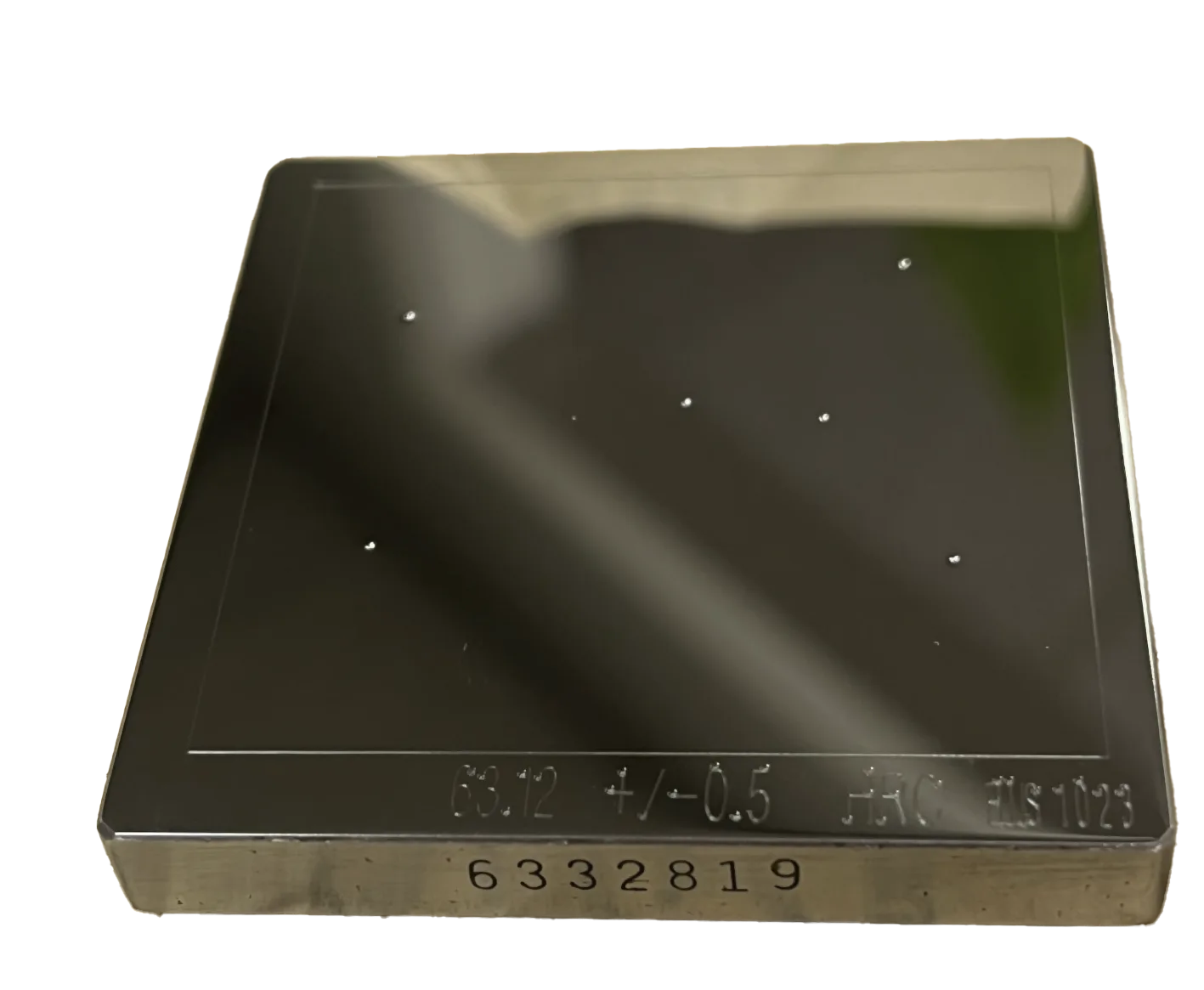
Hardness Test Blocks, Indenters and Hardness Testing Accessories
Certified Test Blocks are a requirement as a reference material for any type of hardness testing. At NextGen, we understand the importance of a Test Block to ensure the accuracy of your hardness testing procedures.
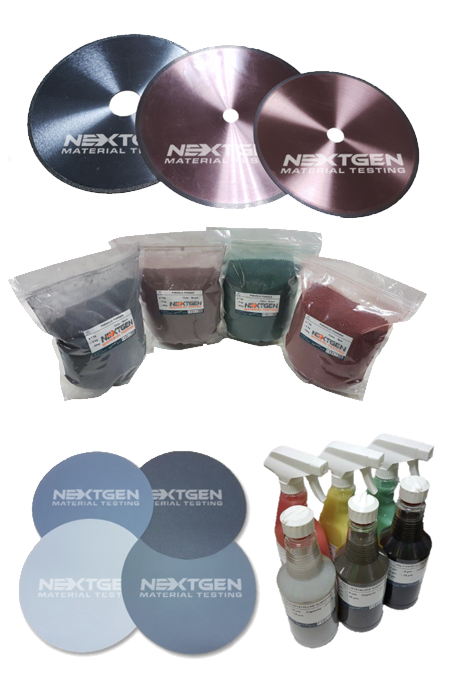
Metallography Consumables
Learn about the full scope of NextGen's cutting, polishing & grinding, mounting and etching metallography consumables. Our consumables are compatible with virtually all global brands, offering a rare combination of exceptional quality, longevity and affordability.
FAQs
| Model | BrinGen 3000 | BrinGen 3000 w/ CCD Optical Analysis and Software |
| Photo | 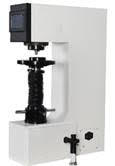 |
 |
| Loading - Dwell - Unloading | Automatic | Automatic |
| Machine structure | Close loop load cell type | Close loop load cell type |
| Test force | 62.5-3000kgf | 62.5-3000kgf |
| Indentation Measurement | Manual microscope measurement of the indentation diameter; input diameter length / force and indenter diameter into machine screen; and the machine calculates the Brinell hardness value automatically. |
Can work independently with machine or directly with the software. Using a portable measurement camera, the software will accurately measure the indentation automatically; the hardness value will display on the software window automatically; and the generated test report including test force / indentation image, hardness value, etc. will display on the software for ease of export. |
| Test report | No | Yes (Word / Excel) |
| Hardness conversion | No | Yes |
| Software | No | Yes, with HBS-P software (support Win 10 system); Software supports automatic measurement and manual measurement working modes |
| Advantages | Lower Price | Easy operate, exceptional accuracy, fast test results, additional test information can be easily obtained |
| N/A | NextGen's CCD system can work on virtually any PC. There will not be a need for a "proprietary" computer to operate the CCD Scope |
|
| Disadvantage | Manual measure the indentation diameter length, and manual input data to the machine screen produces a lower work efficiency | Higher Price |
BringGen-3000 system comes standard with a manual measuring microscope. Once the indentation is made, the manual microscope is placed on top of the indentation and the operator uses the micrometers to align to the diagonals of the indentation. The reading is then input into the main unit using the touch-screen, user-friendly LCD screen and the machine in turn provides your Brinell hardness reading.
The CCD Optical Analysis upgrade for the Brinell hardness tester allows the operator to make the indentation, then simply place the CCD camera onto the indentation, and the automatic software will do the rest. The system will auto align the diagonals and provide you error free Brinell readings directly onto a PC. This eliminates the operator error factor and allows for additional export possibilities to Excel directly.
Learn more by contacting us today.
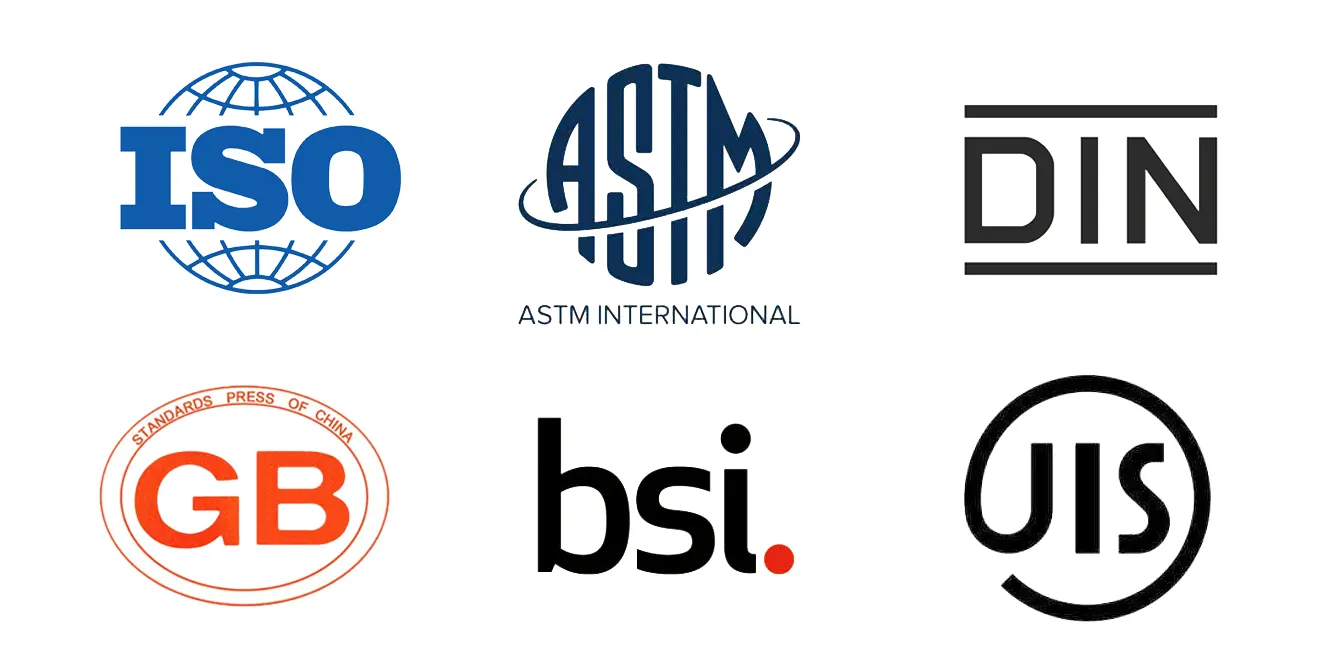 At NextGen, every hardness tester is built to operate strictly within the framework of international standards. Calibration and verification procedures are part of the design, so the equipment consistently delivers values that can be trusted in any professional setting.
At NextGen, every hardness tester is built to operate strictly within the framework of international standards. Calibration and verification procedures are part of the design, so the equipment consistently delivers values that can be trusted in any professional setting.